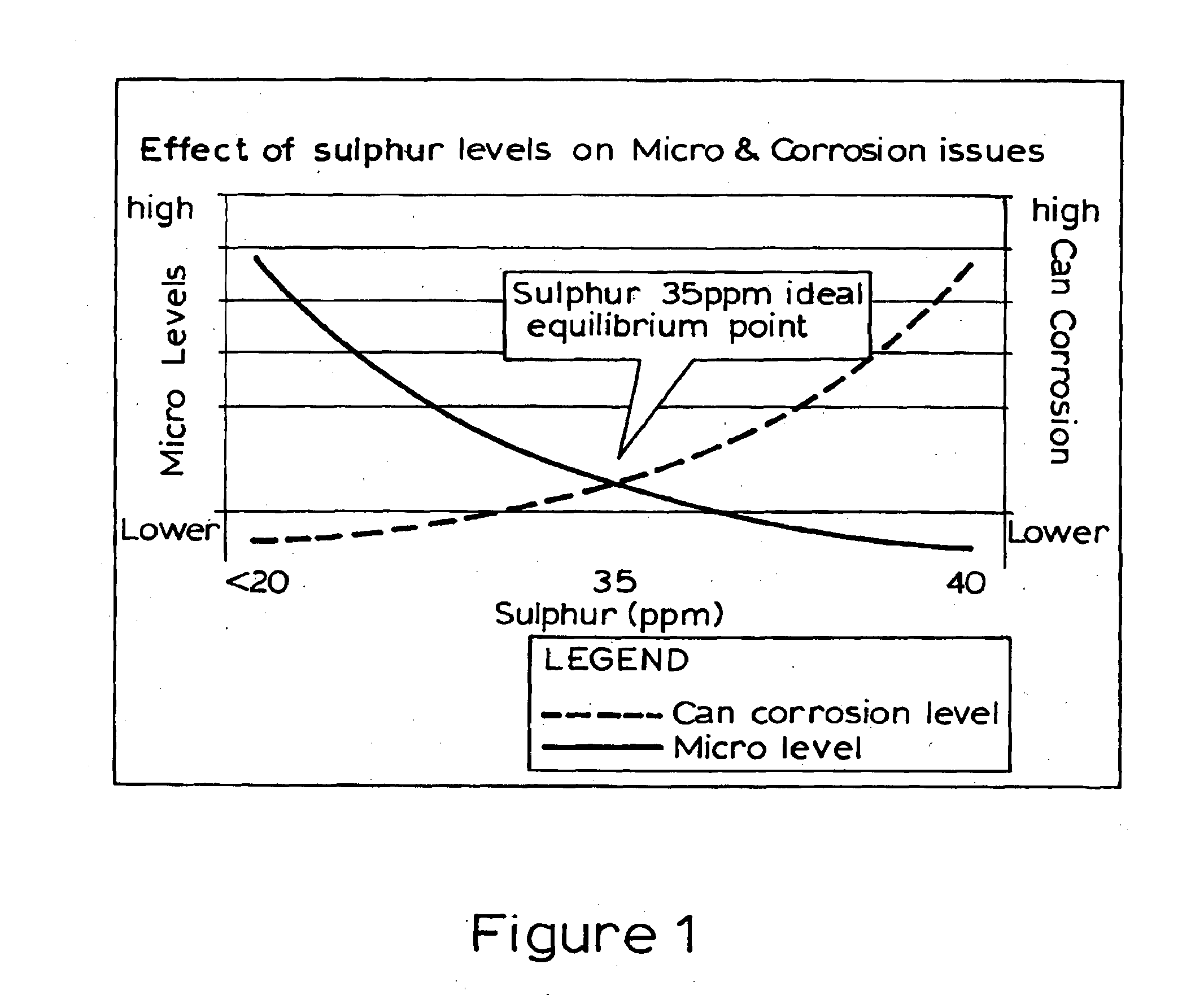Wine packaged in aluminium containers
a technology of aluminium containers and wine, applied in the directions of transportation and packaging, meat/fish preservation using chemicals, milk preservation, etc., can solve the problems of difficult to maintain the integrity of wines during transportation globally, the failure of attempts to use such packaging types for wine storage and transportation globally while maintaining its original integrity, and the low quality of wines stored in polyvinyl chloride containers. achieve the effect of preventing microbial growth and spoilage of products, and preventing microbial spoilag
- Summary
- Abstract
- Description
- Claims
- Application Information
AI Technical Summary
Benefits of technology
Problems solved by technology
Method used
Image
Examples
Embodiment Construction
[0044]Preferred embodiments of the invention will now be described.
[0045]In filling aluminium containers with wine there is a need to preserve the wine in the state it is in at the time of filling and to guard against microbial deterioration of the wine. In bottled wine sulphur dioxide has been used to control microbial deterioration but corked bottles allow for dissipation of excess sulphur dioxide. In the hermetically sealed environment of an aluminium container too much sulphur dioxide can affect the wine and also lead to corrosion of the container and liner further adversely affecting wine quality and shelf life.
[0046]FIG. 1 illustrates this problem.
[0047]Grape Varieties used in in the preferred embodiments of the invention are shown in Table 1.
[0048]In all the tables used in this specification, individual results have been combined and averaged. References to ranges of values for pH, free sulphur alcohol content reflect that all of the wines in the specified range had the chara...
PUM
| Property | Measurement | Unit |
|---|---|---|
| pore diameters | aaaaa | aaaaa |
| pore diameters | aaaaa | aaaaa |
| pore diameters | aaaaa | aaaaa |
Abstract
Description
Claims
Application Information
 Login to View More
Login to View More - R&D
- Intellectual Property
- Life Sciences
- Materials
- Tech Scout
- Unparalleled Data Quality
- Higher Quality Content
- 60% Fewer Hallucinations
Browse by: Latest US Patents, China's latest patents, Technical Efficacy Thesaurus, Application Domain, Technology Topic, Popular Technical Reports.
© 2025 PatSnap. All rights reserved.Legal|Privacy policy|Modern Slavery Act Transparency Statement|Sitemap|About US| Contact US: help@patsnap.com

